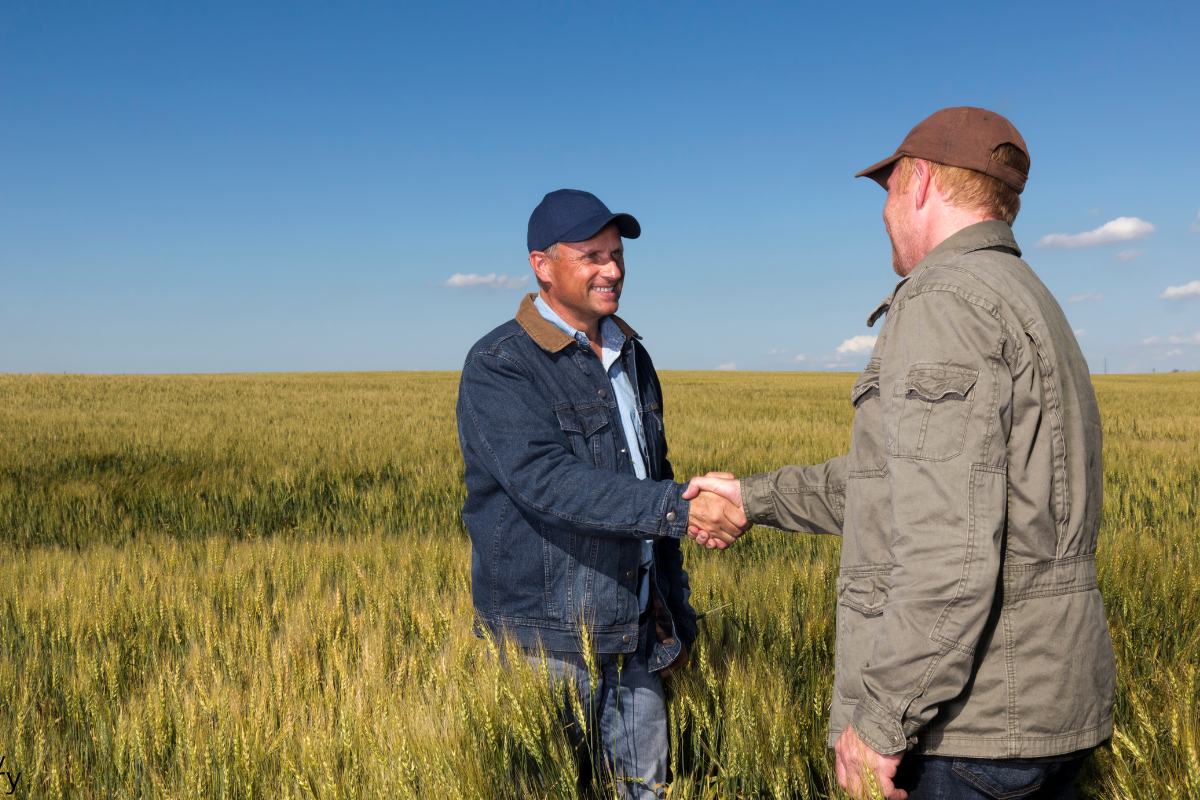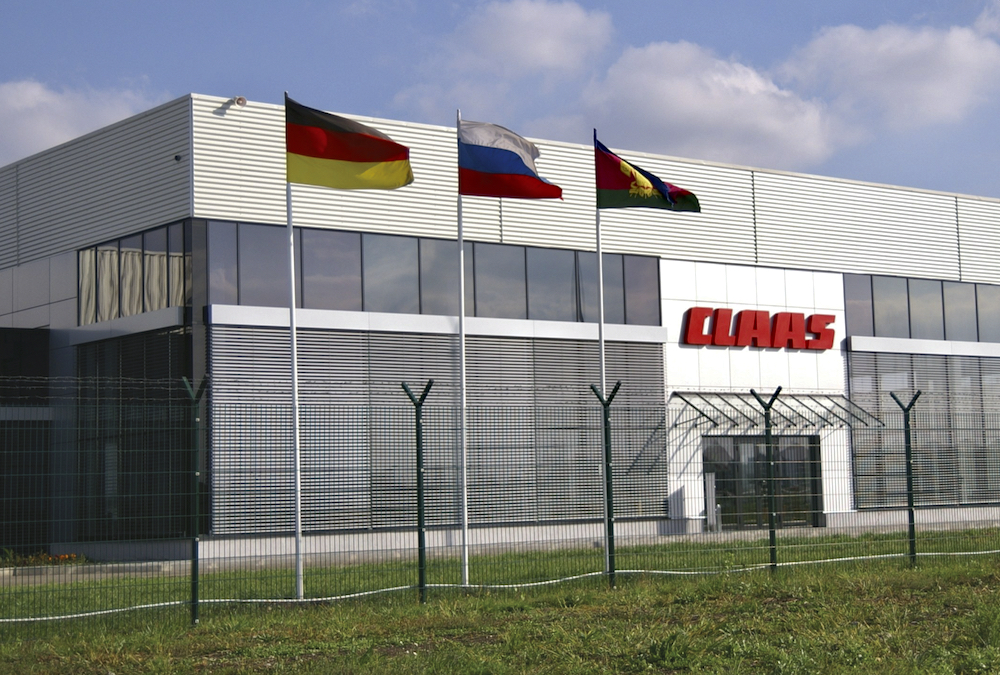When Camil Côté landed in Ukraine’s capital Kiev last July, he was on a mission to establish grain co-operatives in a country that used to be the breadbasket of the Soviet Union. But if there was any irony in a Canadian going to the heartland of communism to build new co-ops, it wasn’t on anyone’s minds.
Ukraine is sitting on the greatest — and most underperforming — expanse of prime farmland in the world.
To make that farmland productive is going to take more than machinery, and more than seed. It’s going to take imagination and some brilliant strategic planning.
Read Also

Are you ready for farm succession?
What motivates some farmers to make a succession plan while others don’t seem worried.
And that may be just what is finally underway.
Côté’s assignment comes directly from Ottawa. At 64, he is project manager at the cumbersomely named Canadian Cooperation Society for International Development (Socodevi), and he is a veteran of international affairs.
Ottawa also set the terms. Côté has a budget of $13 million, and a time frame of five years to accomplish his task.
The official name of the project at the Canadian International Development Agency (CIDA) headquarters is the Ukrainian Grain Storage and Marketing Project. It has received a green light by Canada’s former minister of international co-operation, Beverley J. Oda, while visiting Ukraine in April 2012 — which not incidentally was the UN Year of Co-operatives.
This Canadian scheme does have unusual optics, of course. Just four months after the project was approved, the Harper government axed the Canadian Wheat Board (CWB) monopoly at a cost of some $350 million of taxpayers’ money.
During its 75 years of sometimes controversial existence, the CWB acted as a giant co-op, pooling and marketing on behalf of Western Canada farmers’ more than 20 million tonnes of wheat and barley for human consumption.
Even its opponents will agree, however, that the CWB contributed to Canada’s reputation as a reliable and top-quality wheat supplier, and that it helped transition Canada’s West from a remote, undeveloped agricultural resource into an agricultural powerhouse.
Could a new generation of co-operatives help Ukraine achieve the same?
Camil Côté doesn’t let himself get sidetracked by political considerations. His only concern is to achieve his “Ukrainian project.” He needs to build and get grain flowing through two new elevators in Ukraine with a combined capacity of 40,000 tonnes, at a cost of $4 million each.
I accompanied Côté and his team on a recent trip to Ukraine to assess his chances of reaching that goal.
As soon as he landed in Ukraine’s capital, Côté and his team tested the ground to see what reception their project might get.
“You can count on us,” said an enthusiastic Volodymyr Klymenko, president of the Ukrainian Grain Association (UGA). The association is an umbrella group representing the gamut from individual grain producers and domestic merchants to international players such as Cargill.
Since Ukraine achieved independence in 1991, as the result of the fall of the former USSR, “We have quickly passed from a socialist system to embrace a capitalist system with big, vertically intregrated agribusiness operations,” said Klymenko. Some of his individual members farm from 200,000 to up to 1.25 million acres.
But Ukraine cannot count only on big players, he says. The country intends to double its annual grain output to 100 million tonnes with the use of better technologies and better seeds, and there is plenty of room for small- and medium-size producers to operate under co-operatives.
On one hand, says Klymenko, UGA members want to see the maximum possible volume of cereals going through their grain terminals in order to make them most profitable.
But the scale is daunting. According to the United Nations Food and Agriculture Organization (FAO), the country needs $5 to $8 billion to modernize its publicly owned inland terminals as well as its port storage capacity located on the Black Sea.
With such great needs, the Canadian investment in co-op elevators is welcomed with open arms, especially since the co-operative strategy could put more leverage in the hands of Ukrainian farmers.
More from the Country Guide website: Ukraine: The world’s next breadbasket
Côté and his team receive another warm welcome from Victor Andrievsky, president of the Agrarian Markets Development Institute (AMDI), a non-governmental organization based in Kiev. After independence, Ukraine’s 600 state-owned silos were quickly privatized.
The country now counts 751 silos, of which 80 still belong to the state. “Today our producers are in a situation like serfs were during medieval times,” says Andrievsky. “Without appropriate storage capacity at the farm level, they are forced to sell their grain right after harvest at low prices to the elevators. A lot of them (elevators) cheat on the grain quality and the volumes stored.”
Co-op elevators built along the country’s railways would create a balance of power, Andrievsky believes. How? By offering a storage alternative to producers and more transparency on pricing, as well as extra access to markets.
Among other things, Andrievsky and his team are working to strengthen Ukraine’s national system for elevator accreditation. If an elevator goes out of business, for instance, AMDI wants to ensure producers still get paid for their stored grain.
The rise of one or a few co-operative elevators in Ukraine would give farmers tremendous economic leverage, insists Andrievsky. Producers must deal with annual interest rates of 25 per cent and more to operate their farms.
“It’s complete nonsense! For each $100,000 dollars you borrow, you have to give $25,000 dollars to the bankers,” says Bodhan Chomiak, a Ukrainian who left Ukraine and has worked for some 20 years in Alberta.
Director of the consulting firm Lapersa, also based in Kiev, Chomiak thinks the only way to farm in Ukraine is through the injection of sovereign capital or mutual funds in big and well-managed, vertically integrated agribusiness companies. This is in order to achieve economies of scale and to escape having to depend on Ukraine’s banks.
Victor Andrievsky has an alternate plan, however. He is working on a system that would put some money into the hands of the Ukrainian producers through the implementation of a Grain Warehouse Receipt (GRW) system.
This system would be similar to Canada’s Advanced Payment Program (APP), under which producers can get cash advances based on the value of their future crops held in storage.
Andrievsky believes such a system would allow Ukrainian farmers to buy seed, fertilizer and tractors, and even to build storage on their farm or to invest in a co-op. The problem, however, is that the Ukrainian government doesn’t have the cash to launch GRW. “But we benefit from $250 million in aid from the FAO to implement the system,” says Andrievsky.
A misunderstood gift
Strongly confident with the support their project has received in Kiev, Côté and his team fly 400 km southeast to Dnipropetrovsk, capital of the state of the same name. Dnipropetrovsk is Ukraine’s third-largest agriculture state.
There, the team of 12 board a minibus for the 30-km trip to the rural village of Vasilkivka.
What they find seems ideal for launching a first co-operative elevator. An important railway system runs through the village, and the area has 300 producers, each farming an average 750 acres of grains.
More importantly, their farms are concentrated within a radius of 30 kilometres, a key consideration for reducing the cost of grain delivery to the future elevator.
Approximately 20 producers, men and women ranging from 25 to 50 years old, await Côté and his team in the city hall, a grey monolith whose entrance is shaded by a colossal statue of Lenin.
Maksym Maksymov takes the stage and explains the advantages of a co-operative elevator. It would offer storage facilities, plus cleaning and drying. It would also blend grains for sale by the pool, and he says it would provide these services for half the price charged by surrounding elevators, according to the team’s market study.
The project would be built in three phases: a first silo of 20,000 tonnes would be built near the main railway, followed by two other silos of 10,000 tonnes each.
Questions fill the room, especially regarding the financial obligations on the farmers. There are answers too, but suddenly, voices and tension increase. One farmer gets up and quickly walks out of the room, followed by almost everyone else.
What happened?
“The first draft of this project was laid out five years ago. Each time, the Canadians change the rules,” Leonid Chernoknijiyj, president of the local grain producers association told us through an interpreter.
The issue is farmer control. Under the original plan, farmers would have had 80 per cent control of the co-op. Under the new plan, they’d get only 30 per cent.
The reason, says Côté, is that the elevator would be managed as a part of a larger union of co-operatives. “We are not coming to Ukraine to build one or two elevators,” Côté says. “The goal is to spread the co-op movement all over the country.”
Only three producers remained in the room to discuss the project. Among them, they farm less than 500 acres, and produce less than 500 tonnes of grains.
The Canadian team seems very far from its objective to rally at least 70 producers to get the critical mass necessary to erect the first silo.
At the dinner following the disastrous meeting, presided by Chernoknijiyj, the few toasts filled with local vodka don’t quite warm the atmosphere, but Ukrainians and Canadians promise they will work out their differences.
According to Vadim Udovitskiy, chief of Dnipropetrovsk’s agriculture department, it is very hard for the Ukrainian producers, having only known state farms for more than 60 years. “Our producers don’t realize that they can take individual business decisions within a collective movement,” says Udovitskiy.
Undeterred by this first meeting, Camil Côté is now rethinking his strategy.
Four years ago, he launched a similar program in the dairy sector and today seven dairy co-ops operate in the country. These co-ops have doubled the annual net returns of 1,100 dairy producers, using better feed management and better animal genetics to increase milk production.
“We have done it in the dairy sector,” says Côté. “I don’t see why we would not succeed in the grain sector.”















